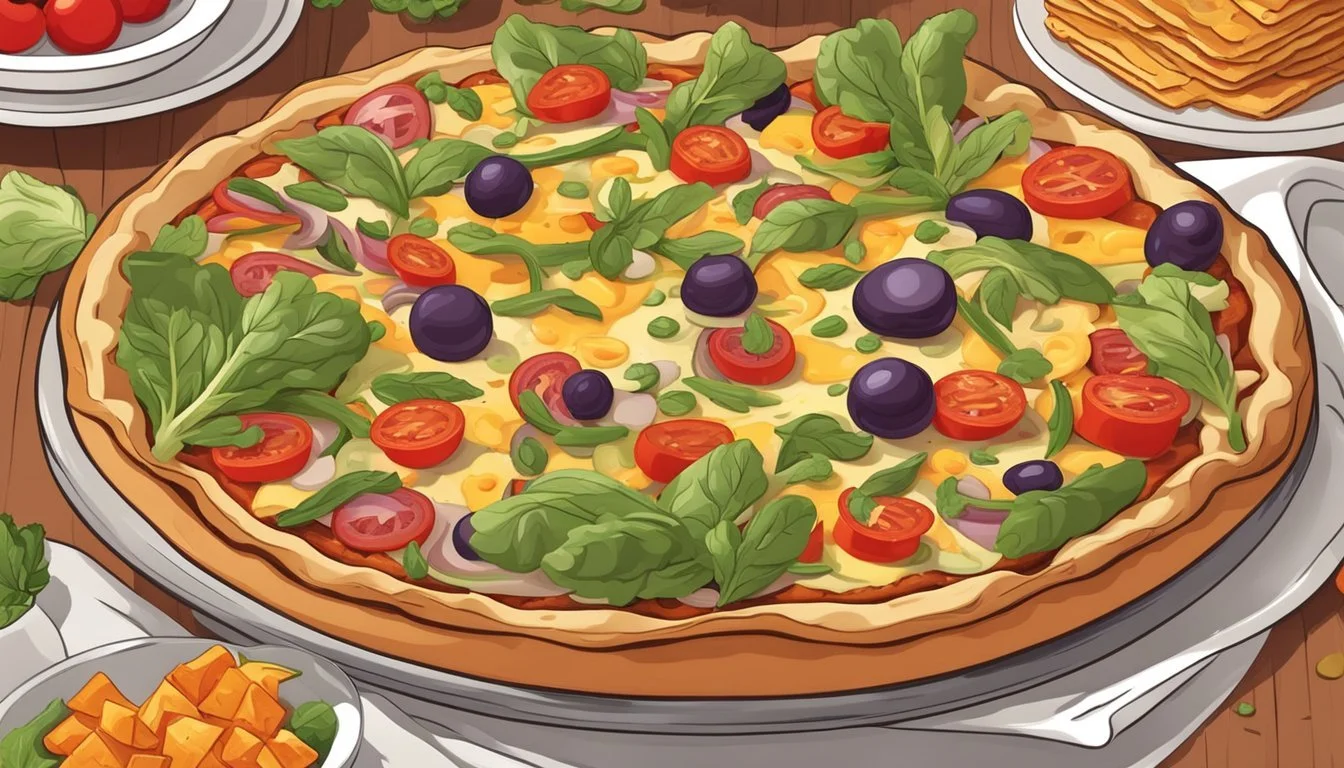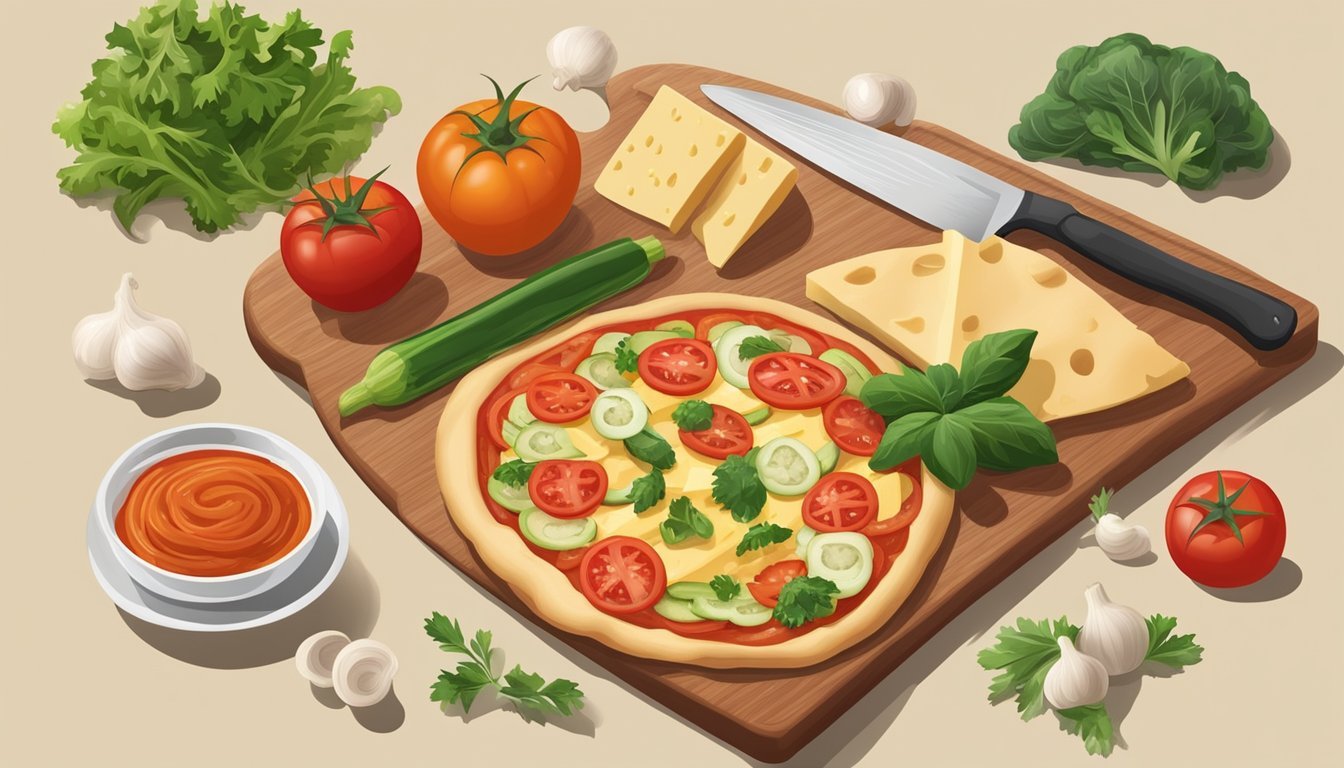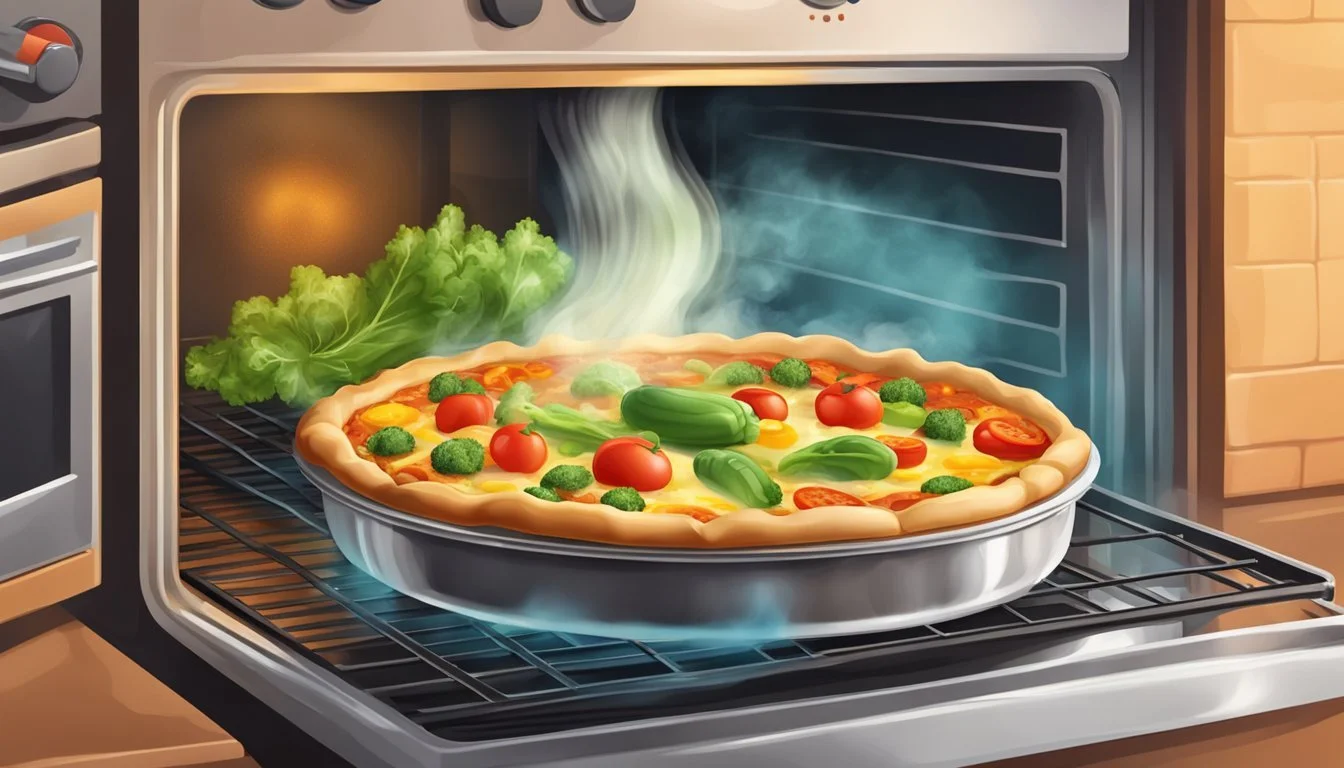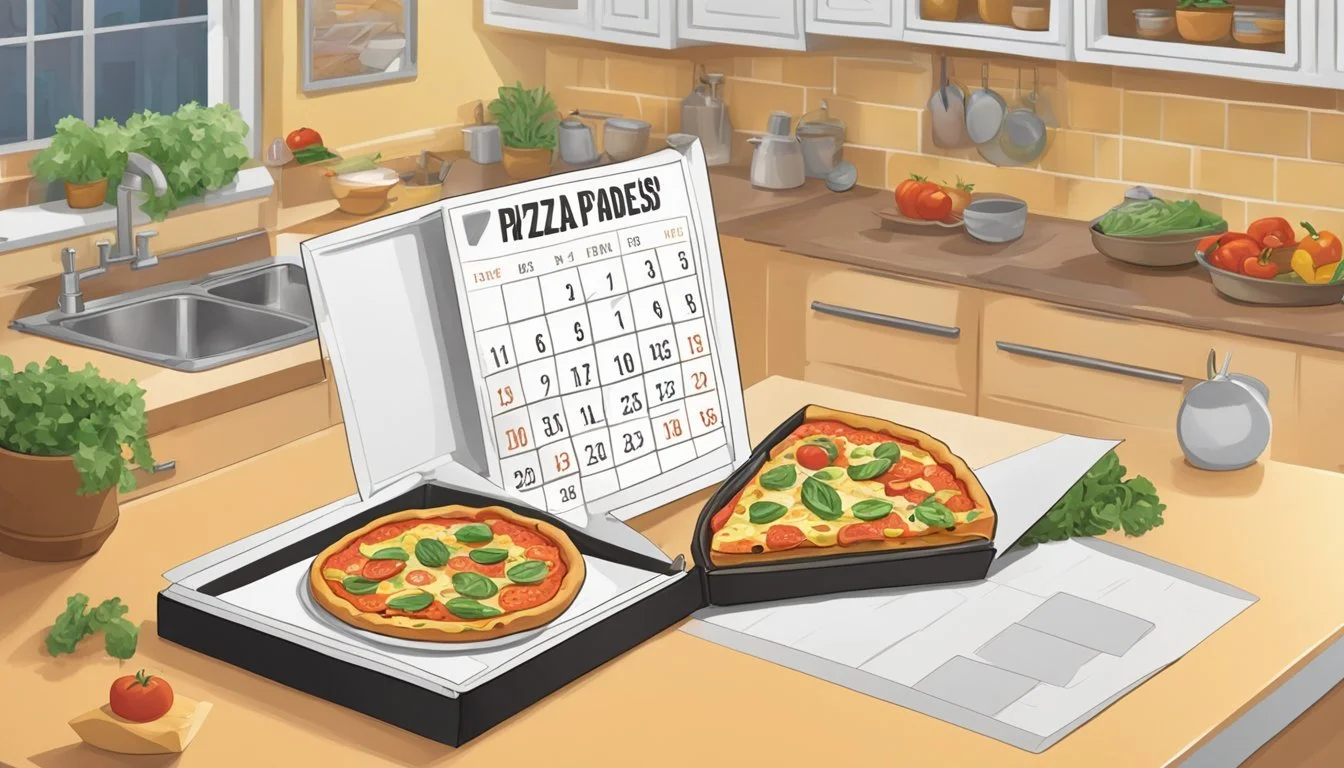How Long Does Deep Dish Veggie Pizza Last?
Storage Tips and Shelf Life
When it comes to extending the life of your deep dish veggie pizza, understanding the proper storage techniques is crucial. A freshly made deep dish veggie pizza can typically be stored in the fridge for up to 3-4 days. If the pizza has been reheated, its refrigeration lifespan decreases to roughly 1-2 days.
Many factors influence the longevity of your veggie pizza in the fridge, such as the types of vegetables used and the freshness of the toppings. It's essential to store the pizza in an airtight container to prevent it from drying out and to limit exposure to air that can cause spoilage. This way, you can enjoy the savory and hearty flavors of your deep dish veggie pizza longer.
Additionally, for those who want to extend the shelf life even further, freezing is a viable option. Properly frozen deep dish veggie pizza can last for one to two months. When you are ready to eat, simply thaw it in the refrigerator overnight and reheat in the oven. Following these steps ensures that you can savor every bite of your delicious homemade or store-bought deep dish veggie pizza without the worry of it going bad too soon.
Understanding Deep Dish Pizza
Deep dish pizza, especially the Chicago-style, has a unique history and specific characteristics that set it apart from other types of pizza.
History and Origin
Deep dish pizza was popularized in Chicago, where it first appeared at Pizzeria Uno in 1943. This style of pizza has its roots in the mid-20th century, designed to satisfy the hearty appetites of Chicago's working class. Unlike traditional thin-crust pizzas, the deep dish focuses on a thick, buttery crust that can support a substantial amount of toppings.
Pizzeria Uno still serves as a landmark for pizza enthusiasts. The Chicago-style deep dish has since become synonymous with the city's cuisine, influencing many pizzerias and home cooks.
Key Characteristics
The hallmark of a deep dish pizza is its tall, thick crust, often reaching up the sides of the pan to create a pie-like container. This crust is usually made with a rich, buttery dough.
A generous layer of cheese often covers the dough, followed by plentiful toppings such as vegetables, meats, and then a chunky tomato sauce. Baking typically occurs in a round, deep pan to achieve a uniform, golden brown crust.
Ovens are usually preheated to higher temperatures, around 450°F, to ensure a thoroughly baked pie. This style allows for diverse and robust toppings, creating a filling meal.
Ingredients and Preparation
Preparing a deep-dish veggie pizza involves selecting quality ingredients, making a perfect dough, and layering the pizza thoughtfully.
Selecting Quality Ingredients
For a delicious deep-dish veggie pizza, the quality of the ingredients is paramount. Use fresh vegetables like spinach, bell peppers, and mushrooms as they bring vibrant flavors and textures. Select high-quality mozzarella and pizza sauce made from ripe tomatoes, garlic, and basil.
Choosing the right type of flour and yeast is also important for the dough. All-purpose flour works well, while active dry yeast ensures proper rise. Fresh herbs such as oregano and thyme enhance the sauce and toppings.
Dough Making Process
Creating a perfect dough requires attention to detail. Combine warm water, active dry yeast, and a pinch of sugar and let it sit until it becomes frothy. This usually takes about 5-10 minutes. All-purpose flour, cornmeal, and salt are then mixed in gradually.
Knead the dough for about 10 minutes until smooth. Place the dough in a lightly-oiled bowl, cover, and let it rise in a warm place for 1-2 hours until it doubles in size. Punch down the dough to release air and let it rest briefly before shaping.
Layering the Pizza
Layering is crucial for a deep-dish veggie pizza. Start by pressing the dough into a well-oiled deep dish pizza pan or cast iron skillet, ensuring it's evenly spread and slightly up the sides. A generous layer of mozzarella goes first, preventing a soggy crust.
Next, spread an even layer of pizza sauce over the cheese. Follow with layers of fresh vegetables like sliced tomatoes, spinach, and bell peppers. Finally, drizzle with olive oil and sprinkle with herbs.
Bake in a preheated oven set to around 450°F for roughly 25-30 minutes until the crust is golden and the cheese bubbles. Let it cool slightly before slicing and serving.
Cooking Techniques
To perfect a deep dish veggie pizza, one must master distinct cooking techniques. Emphasizing proper bake time, equipment, and alternative methods ensures a well-cooked, golden brown crust and bubbly toppings.
Baking the Perfect Pie
The initial step in creating an exceptional deep-dish veggie pizza is preheating the oven to 450°F. Utilize a deep dish pizza pan that's lightly oiled to prevent sticking. For an even cook, consider placing a pizza stone on the lower rack of the oven, which helps in achieving a crisp, golden brown crust.
Press the dough into the pan, ensuring it rises about 1 to 1.5 inches up the sides. Spread the toppings uniformly over the dough, including vegetables and cheese. Bake for about 20 to 25 minutes until the crust is golden brown and the cheese is bubbly. Monitoring the cook time is crucial to prevent burning or undercooking.
Alternative Cooking Methods
Although baking in a traditional oven is preferable, alternative methods can also produce an excellent deep dish veggie pizza. For instance, a cast iron skillet provides even heat distribution and can be used on the stovetop if necessary. Begin by preheating the skillet over medium-high heat, then transferring it to the oven.
Using a microwave isn't typically recommended due to inconsistent heat, which may result in a soggy crust. Broiling can be an effective method to brown the cheese if the oven lacks a high heat setting. Simply place the pizza under the broiler for the last few minutes of cook time, ensuring the top becomes bubbly and golden without charring.
Storage Insights
Ensuring your deep dish veggie pizza stays fresh involves proper refrigeration and freezing techniques. Different methods cater to short-term or long-term storage needs.
Refrigerating Leftovers
When refrigerating leftover deep dish veggie pizza, it is important to act promptly.
Allow the pizza to cool to room temperature.
Wrap each slice individually in aluminum foil or store in an airtight container to prevent drying out.
Place the wrapped slices in the fridge.
Timeframe: Properly stored, pizza can last 3-4 days in the refrigerator. Make sure the fridge is set to 40°F (4°C) to maintain food safety.
Ingredients: Mozzarella cheese and various vegetable toppings can be sensitive to temperature changes, so maintaining consistent cold storage is crucial.
Freezing for Longevity
For longer storage, freezing the pizza is a viable option.
Cool the pizza to room temperature.
Wrap individual slices tightly in plastic wrap, then in aluminum foil, or use freezer-safe containers or bags.
Label with date to track freshness.
Timeframe: When frozen properly at 0°F (-18°C) or below, the pizza can last up to 2-3 months.
Reheating: For best results, thaw in the fridge overnight before reheating. Preheat the oven to 375°F (190°C), then bake the pizza on a baking sheet lined with parchment paper until heated through, usually about 10-15 minutes.
These methods ensure your deep dish veggie pizza maintains its quality and reduces food waste.
Shelf Life and Food Safety
Deep dish veggie pizza, like other types of pizza, has a limited shelf life when it comes to freshness and safety. Proper storage is essential to prevent bacteria growth and ensure the pizza is safe to eat.
Refrigerated Storage:
Storage Time: Leftover deep dish veggie pizza can be stored in the refrigerator for up to 3-4 days.
Method: Keep the pizza in an airtight container or resealable bag to maintain freshness.
Freezer Storage:
Storage Time: For a longer storage duration, the pizza can be frozen and kept for 1-2 months.
Method: Wrap it tightly in freezer wrap, aluminum foil, freezer bags, or use airtight boxes.
Safety Concerns:
Bacteria Growth: Leftover pizza should not be left out at room temperature for more than 2 hours. Beyond this, the risk of bacteria growth increases, potentially leading to food poisoning.
Temperature: Ensure the refrigerator is set below 40°F (4°C) and the freezer at 0°F (-18°C) to maintain food safety.
By following these guidelines, the deep dish veggie pizza remains fresh and safe to eat within the specified timeframes.
Nutritional Information
Deep dish veggie pizza is a flavorful and filling option. While it is rich in vegetables, it is also important to understand the caloric content and any dietary considerations.
Caloric Content
Calorie content in deep dish veggie pizza varies by brand and serving size. Hungry Howie's Deep Dish Veggie Pizza contains 360 calories per serving, primarily from fat and carbohydrates. Similarly, Little Caesar's Veggie Detroit Style Deep Dish Pizza has 341 calories. Jet's Pizza Veggie Deep Dish Slice provides an even higher caloric value at 398 calories.
A general approximation for any serving would be around 330-400 calories. Dough and cheese are significant contributors to the calorie count due to their fat content. Vegetables like green peppers, onions, and mushrooms contribute fewer calories but add essential vitamins and fiber.
Dietary Considerations
For those with dietary needs, understanding the ingredients is crucial. Deep dish veggie pizzas are generally vegetarian but not vegan due to the cheese and dough ingredients. They often contain dairy products and may include traces of animal fats.
Nutrition facts show the fat content can be high—up to 18g per serving—with significant amounts of saturated fat. People monitoring their fat intake should take this into account. The pizzas also usually provide a substantial amount of carbohydrates, important for energy but a consideration for those on low-carb diets.
Meat-free doesn’t always mean low calorie or low fat, so always check the specific nutritional information for your preferred brand to meet your dietary goals effectively.
Garnishes and Side Dishes
Deep dish veggie pizza can be enhanced with a variety of garnishes and paired with numerous complementary sides to create a memorable meal. Attention to these details can elevate the dining experience, adding layers of flavor and texture.
Popular Toppings
Deep dish veggie pizza thrives on a diverse array of toppings. Mushrooms, peppers, and onions are staple choices, imparting both sweet and savory notes. Artichokes and spinach offer a unique depth, while kalamata olives introduce a briny flavor that contrasts well with the richness of the pizza.
For cheese lovers, mozzarella is a must, creating a creamy base layer. Parmesan cheese can be sprinkled on top to add a sharp, tangy finish. Fresh basil and oregano bring in exquisite herbal flavors that complement the other toppings excellently. Garlic, whether in clove form or as a powder, adds an aromatic zest that can enhance the overall taste.
Complementary Sides
Pairing deep dish veggie pizza with the right side dishes can turn a simple meal into a feast. A fresh salad balances the pizza’s rich flavors with crisp, light textures. Caesar salad or a mixed green salad with vinaigrette dressing works well.
Garlic bread is another excellent side, its buttery, garlicky flavor harmonizing with the pizza. For a festive touch, include a side of bruschetta topped with tomatoes, basil, and a drizzle of balsamic glaze.
For a beverage pairing, a glass of red wine like Merlot or Chianti accentuates the deep flavors of the pizza, making for a sophisticated dining experience. Those preferring non-alcoholic options might enjoy a refreshing sparkling water with a twist of lemon.
Special Occasions and Events
Deep dish veggie pizza makes an excellent choice for many special occasions and events. It serves as a hearty main course that can easily feed a crowd, making it ideal for parties and gatherings.
Pi Day (March 14) is a fantastic time to celebrate with a delicious deep dish pizza. The round shape and mathematical significance of the day make pizza a fitting and fun option.
Lenten Fridays present a unique opportunity as well. For those abstaining from meat, a veggie pizza offers a satisfying alternative without compromising on flavor.
For birthday parties, consider deep dish veggie pizza. Its rich and filling nature ensures guests are well-nourished and happy. Plus, it's easy to adapt to various dietary needs with different vegetable toppings.
When catering to a large group, prepare a few varieties to offer something for everyone. Include classic toppings like spinach, bell peppers, and tomatoes, and offer some unique combinations to surprise your guests.
Pro Tip: Always have plenty of napkins and utensils ready as deep dish pizza can be a bit messy yet completely worth it.
Exploring Variations and Twists
Deep dish veggie pizza has countless possibilities for innovation, reflecting both regional influences and culinary creativity. From incorporating local ingredients to experimenting with diverse combinations of vegetables, the options are extensive.
Regional Adaptations
Chicago deep-dish veggie pizza stands out for its towering layers and robust flavors. This version often includes roasted red peppers, green peppers, spinach, and other hearty vegetables packed into a thick, buttery crust.
In other regions, adaptations embrace local produce. For example, California-inspired versions might feature asparagus, zucchini, and yellow bell peppers, emphasizing freshness and vibrant colors.
A Midwest variation might incorporate butternut squash and red onion for a sweeter taste profile. Seasonings vary widely as well, with some chefs opting for traditional Italian seasoning, while others explore adding unique, localized spice blends.
Unique Veggie Combinations
Creating unique veggie combinations is essential for elevating the flavor profile of a deep dish veggie pizza. Classic choices like roasted red peppers, green peppers, and spinach are staples that blend well together.
Innovative combinations can include eggplant, zucchini, and red onion, which provide a balance of textures and tastes. Adding asparagus and yellow bell pepper brings in a crunchy, fresh element, adding layers of complexity.
For those looking to push the boundaries, incorporating squash varieties like butternut squash can introduce a subtle sweetness that contrasts the rich tomato sauce. Italian-inspired seasonings such as oregano, basil, and garlic powder can significantly enhance the overall taste experience.











